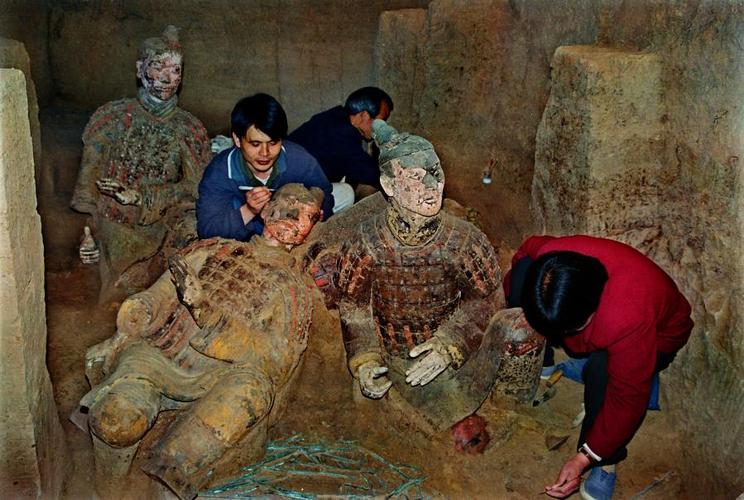
Are They Still Excavating the Terracotta Army?
The Terracotta Army, a vast collection of life-sized terracotta sculptures depicting the armies of Qin Shi Huang, the first emperor of China, has been captivating the world since its discovery in 1974. Spanning over 2,000 years, the sheer scale and artistry of this archaeological wonder continue to amaze and intrigue experts and visitors alike. This begs the question: are they still excavating the Terracotta Army?
The Third Excavation of Pit 1
After 13 years of meticulous work, the third excavation of Pit 1, the largest of the three pits containing the Terracotta Army, concluded in 2022. This excavation provided invaluable insights into the craftsmanship and military strategies of the Qin dynasty, yielding a trove of new discoveries.
During this phase, archaeologists unearthed over 220 new terracotta warriors, each with unique facial features and attire. These figures were found alongside an array of weapons, including bronze swords, crossbows, and chariots, all remarkably well-preserved by the surrounding soil.
The Scope of Excavation
While the completion of the third excavation marks a significant milestone, it's important to note that the excavated area represents only a small fraction of the entire site. In total, only a little more than 400 square meters were excavated during this phase, accounting for a mere 3 percent of the 14,260 square meters that comprise Pit 1.
This limited excavation scope underscores the vastness of the Terracotta Army complex and the delicate nature of the archaeological work involved.
Future Excavations
The decision to cease further excavation of Pit 1 for the time being stems from the need to prioritize the preservation of the unearthed artifacts. The delicate pigments used to paint the warriors are highly susceptible to degradation upon exposure to air and light.
Current preservation technologies are still inadequate to fully protect these colors, making it crucial for researchers to develop new methods for stabilizing the artifacts and preventing their deterioration. This careful approach reflects a commitment to preserving the Terracotta Army for generations to come.
While large-scale excavation in Pit 1 remains on hold, ongoing research and smaller-scale investigations continue at other parts of the site. Archaeologists are utilizing non-invasive techniques, such as ground-penetrating radar and remote sensing, to map the subterranean features of the site and gather data without disturbing the buried treasures.
FAQs
1. Why did they stop excavating the Terracotta Army?
Excavations were halted primarily to focus on the preservation of already unearthed artifacts. Exposure to air and light can damage the delicate pigments on the Terracotta Army figures. Further excavation will resume when more advanced preservation techniques are available.
2. What have they found in the Terracotta Army excavations?
Excavations have unearthed thousands of life-sized terracotta warriors, horses, chariots, and weapons. Each warrior boasts unique facial features and clothing details, highlighting the incredible craftsmanship of the Qin dynasty.
3. How much of the Terracotta Army has been uncovered?
Despite decades of excavation, only a small portion of the Terracotta Army complex has been uncovered. The third excavation of Pit 1 covered just 3% of its total area, highlighting the vast scale of this archaeological wonder.